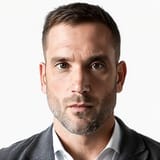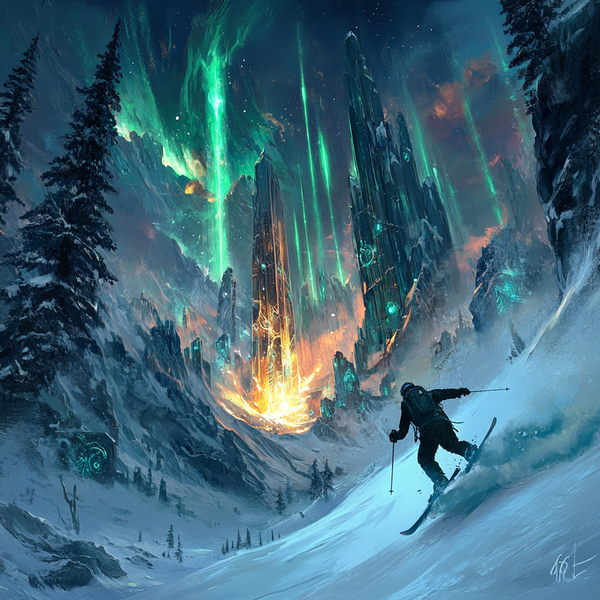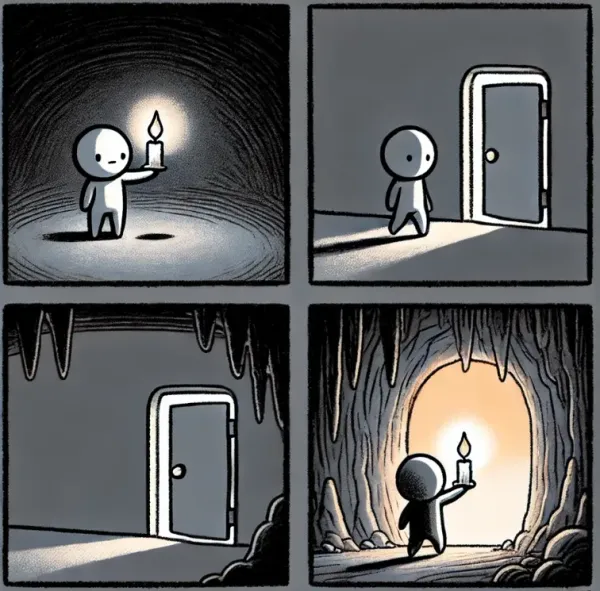"Accelerating Wisdom" Episode 5: Myth's Hidden Wisdom
A manual for the evolution of consciousness

- Article #5 of 8 in the Accelerating Wisdom Series.
- Expert Guest: Psychotherapist, author, mythologist and close associate of the legendary Joseph Campbell, Dr. Stephen Larsen shared his understanding of the secrets revealed by human myth.
- Woo rating: 5/10 (all Leading Edge content will have a “woo rating” reflecting how far from the current consensus worldview it is. But we will never cover topics without direct practical applications).
Myth may seem like a strange topic for a series on wisdom. This is largely a failure of language. The current understanding of myth is that it’s synonymous with fantasy or falsehood. Myths are actually case studies, but for the entirety of human experience. We have watched each other succeed and fail over millions of years. We encoded the key patterns and processes in narratives. This is why the study of myth is the ultimate information alpha.
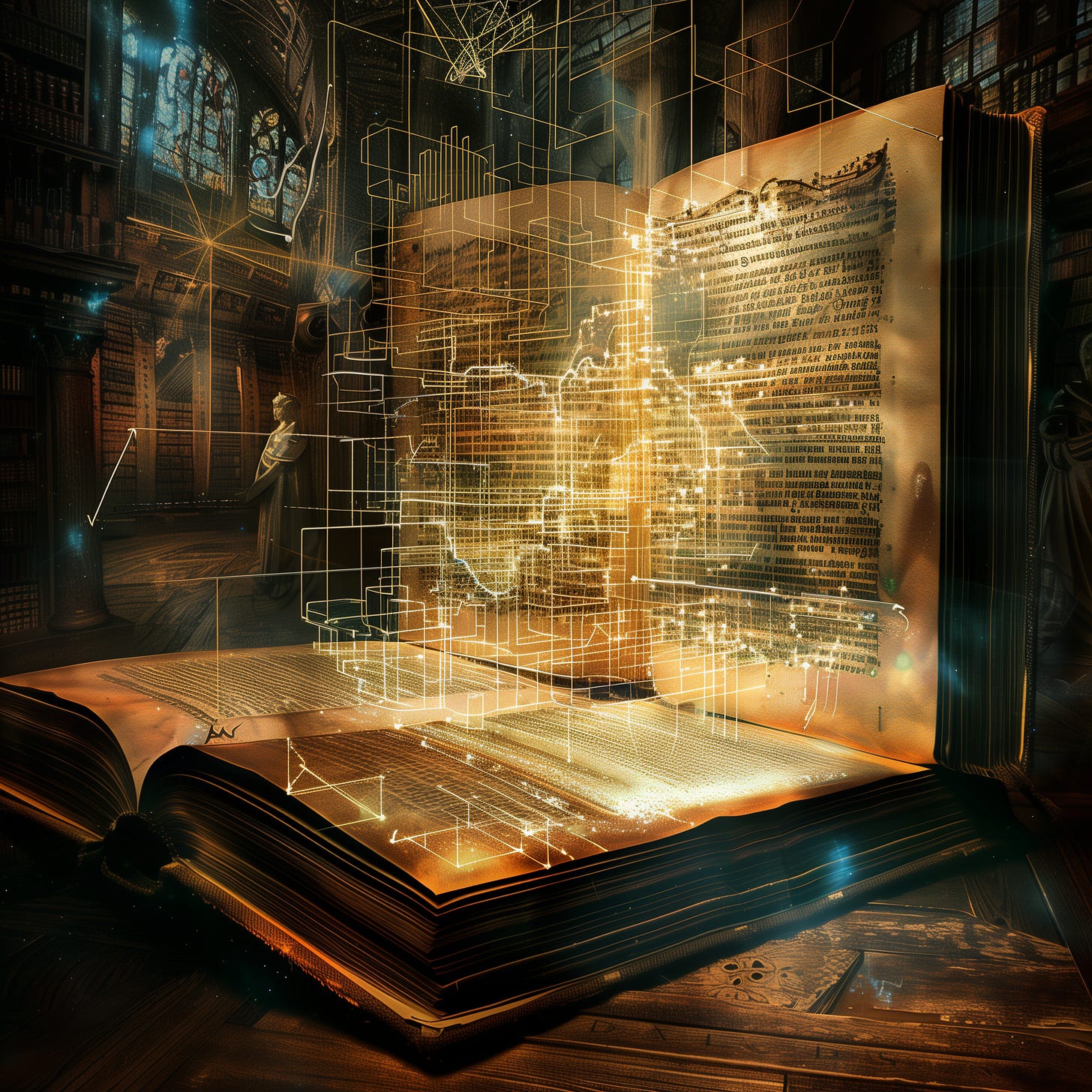
Why is myth worth your attention?
Every moment of our existence is defined by stories. There are the stories we tell ourselves about our days and our lives. There are the stories we read in the news and encounter in our work. There is a constant flow of events around us at all times. Narrative is the tool we use to place this flood of information into some kind of coherent context.
Wisdom is knowing which of these stories is important; most relevant. Our information ecosystem is now so hazardous that our attention is constantly getting hijacked by different stories. An increasingly small percentage are directly relevant to our daily lives. If you’re not paying attention to the quality of the stories you consume, you are open to exploitation and manipulation. With the rise of AI, this trend is only likely to get worse over time. Until we gain an embodied understanding of what true stories feel like, we will constantly be blowing back and forth without discernment.
In order to know what bad stories feel like, we need to consume good ones (this video1 hilariously and insightfully compares Jurrasic Park with Jurassic World to show the difference). Myths are stories that have endured over long periods of human existence. The survival of these stories over hundreds of thousands of years suggests that they retain a power, truth and immediate relevance. The importance of these core stories is often entirely neglected because we assume they are remnants of magical thinking. We also get distracted by the more emotionally negative or “urgent” daily news stories. Entrepreneur
Scott Britton recently conducted an exceptional interview with contemporary mythologist Josh Schrei. It’s an amazing 50 minute introduction to the modern relevance of myth [Spotify link].
Over and over and over again, the stories that are attuned to larger seasonal cycles and larger cycles of the natural world. Stories that transmit knowledge and understanding that is helpful for navigating the actual dynamics of nature, the actual dynamics of living our lives… It's how we connect with and understand and process and align to a larger current, a larger flow of the natural world. If we lose that, if we don't have that, then we might confuse the agitated voice in our own heads for the voice of the cosmos.
-Josh Schrei
The great mythologist Joseph Campbell has been one of the central influences on my life’s work. The only book that I’d like to make required reading for this series is The Power of Myth (if you’d prefer to watch or listen, the entire series is available on YouTube). Our expert guest for this episode is Dr Stephen Larsen. Larsen worked closely with Campbell, co-authoring several books, including his official biography: “A Fire in the Mind: The Life of Joseph Campbell." You can listen to our full 45 minute interview here.
Myth has lots of functions; Campbell identified four.2 But the one this episode is most concerned with is personal guidance. In his excellent book The Shaman’s Doorway, Larsen explains:
“This function of myth would help the individual through those difficult existential choices and crises we all encounter, and provide him with a pattern for dealing with the mysterious universe within: his dreams, inexplicable moods and emotions welling up from inside.”3
What does that mean in practical terms? In Episode 1, Cedric Chin explained how the secret to accelerating expertise is to read relevant case studies in each domain. Episode 2 described the existence of attractors that help guide us towards wisdom and flourishing. Episode 3 described practices on how to tune your body to detect resonance.
There is one particularly resonant myth that’s an operating manual for the specific transition that attunes us to beneficial attractors.
Which Myths are Important?
The longer a myth has been around, the higher the likelihood that its message to us remains relevant. Campbell noticed that one story was so ubiquitious across time and culture he called it the “monomyth”, or the Hero’s Journey. As this myth is the cornerstone of my previous work,4 I won’t go into too much detail here. But it’s important to note that while myth is a word that seems to point backwards to ancient history, this particular story still remains a dominant subtext of our most popular movies and T.V. shows today. It’s the precise structure of eleven of the top fifteen highest grossing movies ever. The multibillion dollar Marvel, Pixar, Disney, Star Wars, Harry Potter, and Avatar franchises are overwhelmingly founded on this distinctive narrative arc.
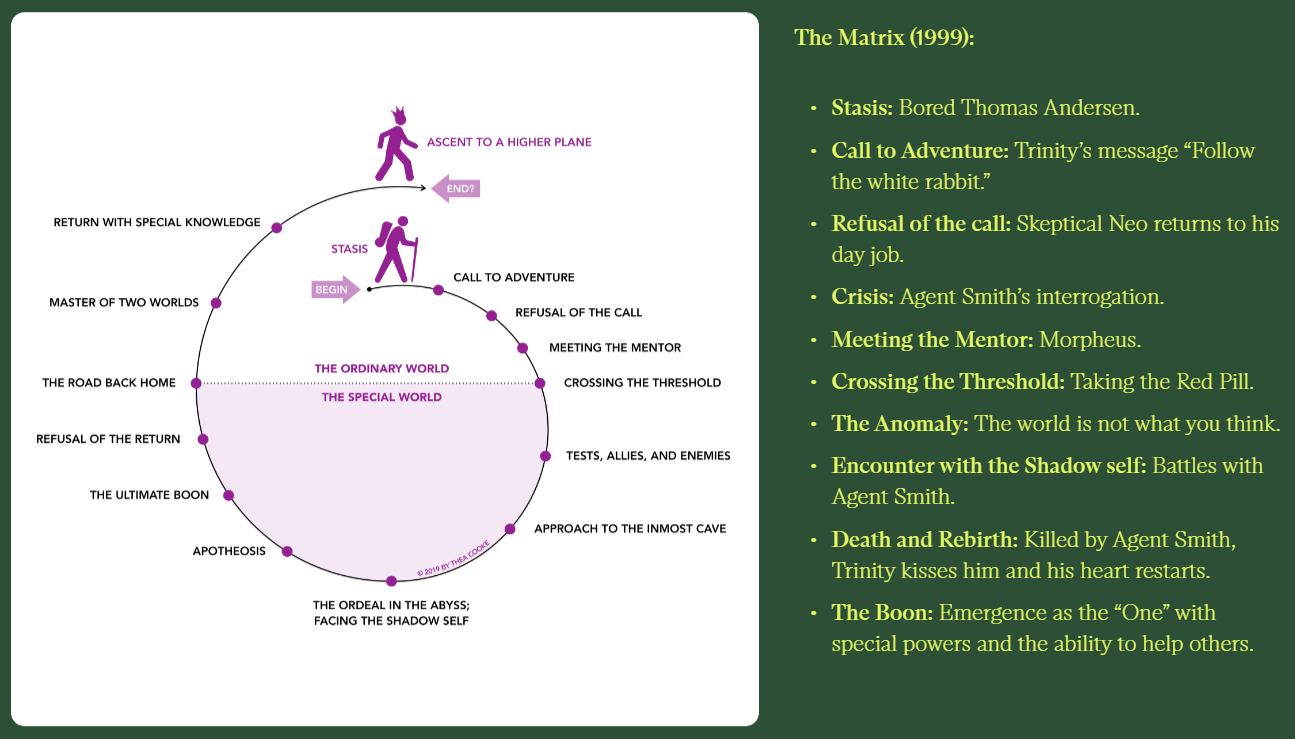
The insight that blew me away, thanks to the remarkable work of Brett Andersen,5 is that the monomyth reflects the universal process of a paradigm shift, or phase change, in any complex adaptive system. It applies equally to our societies as it does ourselves. This means if you can identify where you are on the map, you can anticipate the future.
The structure of a phase-change is simple and precise. An incomplete model encounters an anomaly. The flaws in the model create dissonance, which eventually breaks the existing stale frame. The model then incorporates the anomaly and emerges in a more complete and complex form. The hero’s journey therefore represents the process of complexification for any adaptive system (this also meshes with Ken Wilber’s “transcend and include” model from the previous episode). For each of us, it represents our consciousness getting more complex. Our map of reality gets more detailed, therefore we can navigate it more effectively. This is the path to wisdom, but told as a story.
You can apply this exact structure to where we are culturally in our transition from left-hemisphere dominant to rebalanced. Attractors are the anomaly our culture is currently integrating.6 But you can also apply the map to yourself! The main benefit of understanding the deeper meaning of this narrative structure is that it allows you to take the non-verbal pulls towards your attractor, the call to adventure, more seriously. Especially because any refusal of the call is followed by a crisis of some kind as your hand gets forced. Evolution doesn’t treat stasis kindly.
A central theme of this series is that the evolution of consciousness requires constant rebirth. The Hero’s Journey is a precise operating manual for that process.
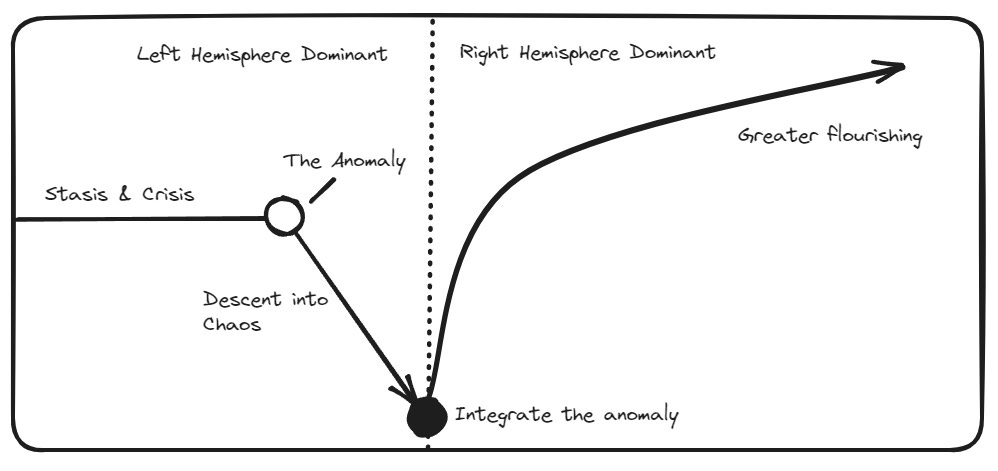
The hero’s journey is a guide to harmonizing with beneficial, guiding attractors. In contrast, “be careful what you wish for” is an equally ubiquitous story that warns us what happens if we cling too tightly to our narrow egoic willpower. You go to the witch and ask for a potion, but it comes at a terrible, unexpected price. King Midas wishes for everything he touches to be turned to gold, but that includes his food and even his own daughter. If you hold on too tightly to a narrow goal, you risk locking yourself in a prison of your own making.
There is also a more specific variation of this myth where repeated misuse of our left hemispheric gifts incrementally leads to disaster. The wildly popular TV shows Better Call Saul and Breaking Bad both perfectly illustrate this underlying theme. In Breaking Bad, Walter White uses his analytical chemistry skills to make methamphetamine. He slowly transforms from a benign and morally-conflicted teacher to the amoral drug kingpin alter-ego “Heisenberg.” In Better Call Saul, Jimmy McGill uses his incredible eloquence to lie in pursuit of money and power. He slowly transforms into slick criminal lawyer “Saul Goodman.” As the title “Breaking Bad” implies, the underlying theme of both shows are a series of poor decisions that lead both characters into increasingly tragic circumstances. They misuse their powerful left-hemispheric gifts and destroy their lives and those of everyone they love. The “Mad Scientist” remains a persistent narrative trope because of our intuitive understanding that our intellect’s need to blindly manipulate nature for power is a sign of insanity.
Dr Stephen Larsen relates this theme to the crippled tyrant or “senex” archetype. This is the stale old man who clings on to power at the cost of vitality. The necessary remedy is a reunion with the feminine. You can see this as a relatively banal commentary on our current political situation, but also as a deeper reflection of our individual psyches. Recall the left hemisphere is competitive with the more holistic and intuitive right. It holds onto power at the price of life.7
In our interview, Larsen also introduced me to one prescription for rebalancing that’s reflected in the “ugly hag” myth. This is when an adventurer descends to the underworld and encounters an angry, ugly woman. He kisses her, or makes amends, and she becomes beautiful. This symbolic reunion is accompanied by a return to real-life environmental stability and bountiful hunting. The ugly hag myth represents a much needed return to harmony with nature and the archetypal feminine, a process that seems to be slowly underway in society and our own psyches.8
How will you act differently as a result?
Just as myths connect us to resonant hidden forces, working with our dreams can provide the same kind of harmonization in our individual psyches. This is something that Dr Larsen and I discussed at length in our interview, and will be a big feature of Episode 7. Dr. Larsen also talked about the expanding role of technologies like Heartmath and Neurofeedback in helping us harmonise conscious and unconscious.
But I believe the best practical recommendation is simply to read more myths, especially The Power of Myth.
When you encounter a myth or story (especially the more esoteric teachings or conspiracy theories), the right question to ask isn’t “is this story literally true?” it’s “how much does this story resonate with me right now.” This resonance is often literally physical. Does your blood run cold? Do you get goosebumps or feel your heart glow? Are you Icarus, Midas, Sisyphus or Prometheus?
You can also find the golden thread of your own personal myth. We can also test and cultivate this mythic resonance within our own lives. Holocaust survivor and renowned value investor Arnold Van Den Berg has discussed how resonant quotes are a way that he believed his unconscious communicated its values to him.9 Places your attention is drawn to and “sticky ideas” that you just can’t let go of are key indicators of your values. Dissonance shows the gap in your own model of reality.
Van Den Berg compiled a book of 5,000 quotes on every subject. I performed the same exercise several years ago, and it had a quite staggering impact on me. I went on an three month elimination diet, when all rich foods and stimulants were removed from my diet. My energy steadily increased and I was drawn to start writing. I wrote a sixty page book compiling all the ideas, quotes and stories that had ever resonated with me. When I realised the common thread running through all of them was my unique “soul”, the articulation of my unconscious values, I immediately experienced a spiritual awakening that changed the course of my life forever.
“For the most important inquiry, however, there is a method. Let the young soul survey its own life with a view of the following question: “What have you truly loved thus far? What has ever uplifted your soul, what has dominated and delighted it at the same time?” Assemble these revered objects in a row before you and perhaps they will reveal a law by their nature and their order: the fundamental law of your very self.”
-Nietzsche
Suggested Experiments and Commitments:
If you’re interested in taking the benefits of these concepts beyond the screen and into your own life, here is a recommended short-term experiment and longer-term commitment.
Experiment:
- Read or watch The Power of Myth.
Commitment:
- Compile a list of every quote, story, movie or song that has resonated with you. Reflect on the commonalities. This exercise is powerful.
Join us in a couple of weeks for Episode 6 on Wise Parenting with Allison Paradise.
Thanks again to Dr Stephen Larsen for all his help and wisdom! Hit Subscribe to follow the rest of the series.
Footnotes + Additional Resources:
Subscribe to "Content Only" to see this section, read the interview, transcript and also gain access to the Circle Members' Forum.
Apply here to become a member of the 150 person network (already close to capacity!) for private expert Q&A calls and the small private WhatsApp.
Transcript on request.
Footnotes
1 Here is Mike Hill’s lecture. [I am not an advocate of his content outside of his specific film analysis].
2 “The first is what I have called the mystical function: to waken and maintain in the individual a sense of awe and gratitude in relation to the mystery dimension of the universe, not so that he lives in fear of it, but so that he recognizes that he participates in it, since the mystery of being is the mystery of his own deep being as well. . . . The second function of a living mythology is to offer an image of the universe that will be in accord with the knowledge of the time, the sciences and the fields of action of the folk to whom the mythology is addressed. The third function of a living mythology is to validate, support, and imprint the norms of a given specific moral order, that namely of the society in which the individual is to live. . . . And the fourth is to guide him, stage by stage, in health, strength, and harmony of spirit, through the whole forseeable course of a useful life.”- Source: The Shaman’s Doorway: Opening Imagination to Power and Myth by Stephen Larsen Ph.D. and John Halifax.
3 Source: The Shaman’s Doorway: Opening Imagination to Power and Myth by Stephen Larsen Ph.D. and John Halifax.
4 My comprehensive analysis of the hero’s journey as a metaphor for hemispheric transition is here.
5 I strongly recommend Brett Andersen’s essay Intimations of a New Worldview as well as his YouTube series of the same name.
6 Western science is current doing it kicking and screaming. As I wrote here.
7 For more on the masculine to feminine transition read The Tyrant and the King.
8 The last 4 pages of the epilogue of Richard Tarnas’ The Passion of the Western Mind is my go-to for this argument (from Bringing it all back home).
9 This podcast interview with William Green and Arnold Van Den Berg is fantastic.
